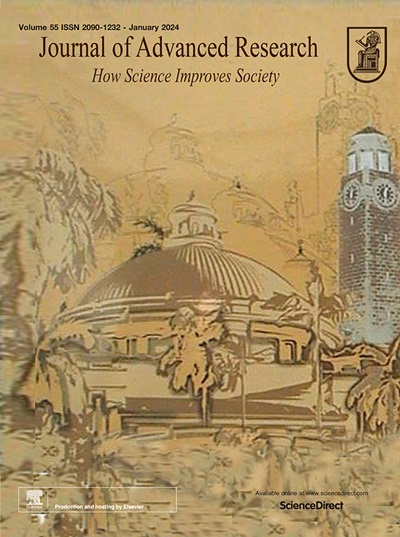巨噬细胞迁移抑制因子调控梗死后炎症的新功能及其治疗意义
IF 11.4
1区 综合性期刊
Q1 MULTIDISCIPLINARY SCIENCES
引用次数: 0
摘要
最近的研究表明,巨噬细胞迁移抑制因子(MIF)在心肌梗死(MI)中具有双重作用,不同细胞来源的MIF对炎症和愈合的影响不同。目的探讨MIF在心肌梗死中的作用、机制及针对MIF的干预效果。方法采用野生型(WT)、MIF基因敲除型(KO)和嵌合型(嵌合型)小鼠冠状动脉闭塞。在体内和体外环境下研究了心肌梗死后的炎症反应和愈合过程。此外,还探讨了药物抑制MIF改善心肌梗死预后的治疗潜力。结果在全球范围内,MIF增强了心肌梗死小鼠的全身和局部炎症反应以及脾单核细胞动员,MIF通过外周血单核细胞(PBMCs)和梗死心肌中的CCR2和CXCR4促进单核细胞迁移。此外,MIF增强血管紧张素Ⅱ1型受体(AT-1R)的表达,并与AT-1R相互作用,促进急性心肌梗死后脾单核细胞的动员。来源于骨髓细胞(KOWT小鼠)的MIF具有更强的全身和局部炎症反应,并增强脾单核细胞的动员。相反,白细胞(WTKO小鼠)MIF缺乏增加了梗死心肌的Ly-6Clow单核细胞积累、M2巨噬细胞浸润和心肌纤维化程度。在体外,来自缺血心脏的MIF增强了M2,但损害了PBMCs中M1巨噬细胞标志物的表达。抗mif治疗有效地减轻了心肌梗死后脾脏单核细胞动员和全身和局部炎症反应,而不影响愈合过程,从而改善了长期预后。结论全细胞和炎症细胞源性MIF的缺失通过抑制单核细胞动员和下调促炎介质来减轻心肌梗死后的炎症,而心源性MIF具有抗炎作用并促进愈合。此外,MIF抗体治疗可以保护心脏免受严重的缺血性损伤,并改善长期预后。本文章由计算机程序翻译,如有差异,请以英文原文为准。

Novel function of macrophage migration inhibitory factor in regulating post-infarct inflammation and the therapeutic significance
Introduction
Recent studies indicate that macrophage migration inhibitory factor (MIF) has a dual role in myocardial infarction (MI), with different cellular sources of MIF influencing inflammation and healing differentially.Objectives
To investigate the role and underlying mechanism of MIF in MI and interventional efficacy targeting MIF.Methods
Wild-type (WT), global MIF gene knockout (KO) and chimeric mice were subjected to coronary artery occlusion. The inflammatory responses and healing processes following MI were studied in both in vivo and in vitro settings. Furthermore, the therapeutic potential of pharmacological MIF inhibition to improve the prognosis of MI was explored.Results
Globally, MIF enhanced systemic and local inflammatory responses, as well as splenic monocyte mobilization, in mice with MI. MIF promoted monocyte migration through CCR2 and CXCR4 in peripheral blood mononuclear cells (PBMCs) and the infarcted myocardium. Additionally, MIF augmented angiotensin Ⅱ type 1 receptor (AT-1R) expression and interacted with AT-1R to promote the splenic monocyte mobilization following acute MI. MIF derived from bone marrow cells (KOWT mice) had stronger systemic and local inflammatory responses and augmented mobilization of splenic monocytes. In contrast, deficiency of MIF in leukocytes (WTKO mice) increased Ly-6Clow monocyte accumulation, M2 macrophage infiltration, and degree of myocardial fibrosis in infarcted myocardium. In vitro, MIF derived from ischemic heart enhanced M2 but impaired M1 macrophage marker expression in PBMCs. Anti-MIF treatment effectively attenuated splenic monocyte mobilization and both systemic and regional inflammatory responses post-MI without affecting the healing process, thereby improving the long-term prognosis.Conclusion
Deletion of global and inflammatory-cell-derived MIF diminished inflammation following MI by inhibiting monocyte mobilization and downregulating pro-inflammatory mediators, while cardiac-derived MIF exerted anti-inflammatory influence and facilitated healing. Furthermore, MIF antibody therapy protected the heart from severe ischemic injury and improved long-term prognosis.求助全文
通过发布文献求助,成功后即可免费获取论文全文。
去求助
来源期刊

Journal of Advanced Research
Multidisciplinary-Multidisciplinary
CiteScore
21.60
自引率
0.90%
发文量
280
审稿时长
12 weeks
期刊介绍:
Journal of Advanced Research (J. Adv. Res.) is an applied/natural sciences, peer-reviewed journal that focuses on interdisciplinary research. The journal aims to contribute to applied research and knowledge worldwide through the publication of original and high-quality research articles in the fields of Medicine, Pharmaceutical Sciences, Dentistry, Physical Therapy, Veterinary Medicine, and Basic and Biological Sciences.
The following abstracting and indexing services cover the Journal of Advanced Research: PubMed/Medline, Essential Science Indicators, Web of Science, Scopus, PubMed Central, PubMed, Science Citation Index Expanded, Directory of Open Access Journals (DOAJ), and INSPEC.
 求助内容:
求助内容: 应助结果提醒方式:
应助结果提醒方式:


